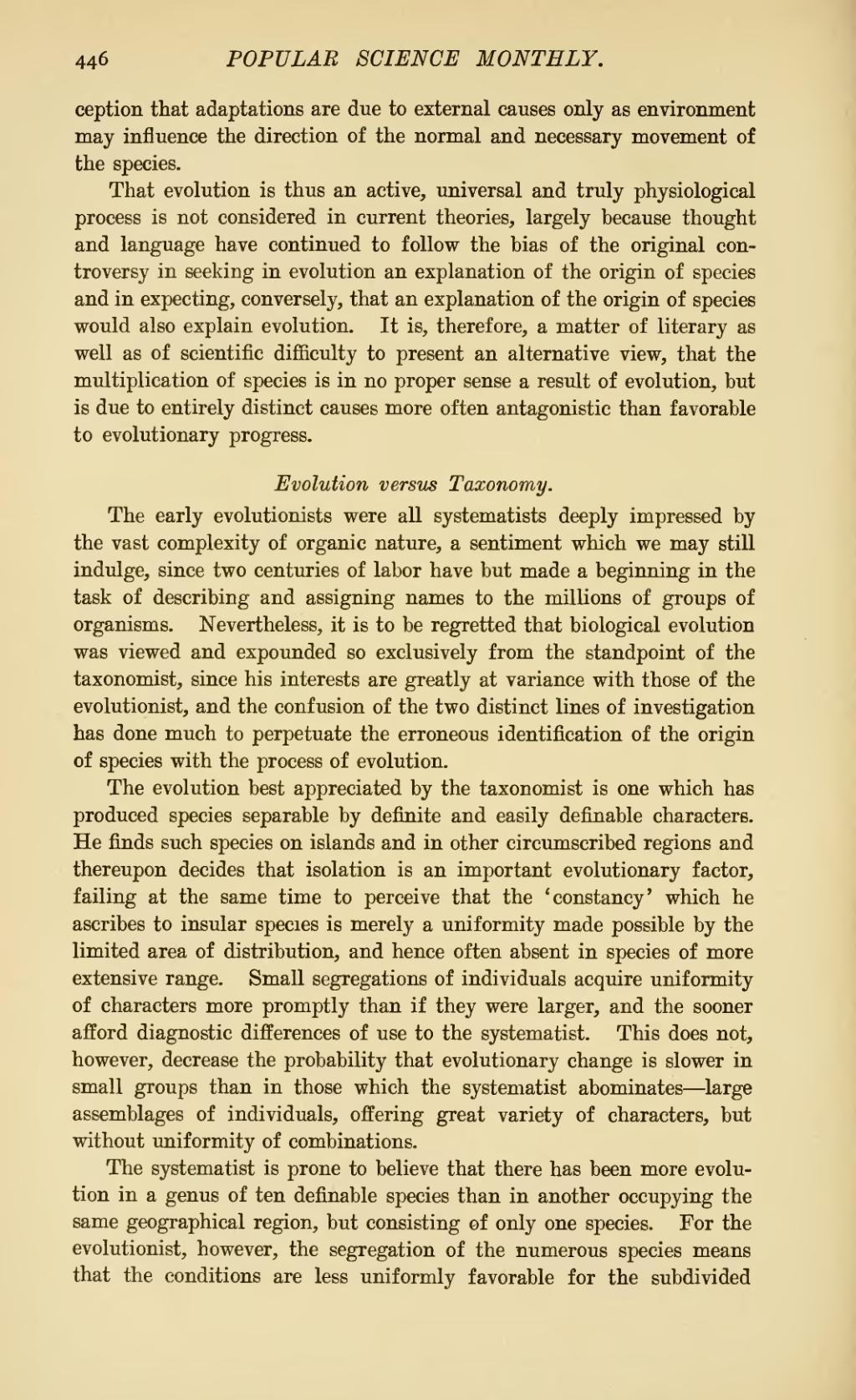ception that adaptations are due to external causes only as environment may influence the direction of the normal and necessary movement of the species.
That evolution is thus an active, universal and truly physiological process is not considered in current theories, largely because thought and language have continued to follow the bias of the original controversy in seeking in evolution an explanation of the origin of species and in expecting, conversely, that an explanation of the origin of species would also explain evolution. It is, therefore, a matter of literary as well as of scientific difficulty to present an alternative view, that the multiplication of species is in no proper sense a result of evolution, but is due to entirely distinct causes more often antagonistic than favorable to evolutionary progress.
Evolution versus Taxonomy.
The early evolutionists were all systematists deeply impressed by the vast complexity of organic nature, a sentiment which we may still indulge, since two centuries of labor have but made a beginning in the task of describing and assigning names to the millions of groups of organisms. Nevertheless, it is to be regretted that biological evolution was viewed and expounded so exclusively from the standpoint of the taxonomist, since his interests are greatly at variance with those of the evolutionist, and the confusion of the two distinct lines of investigation has done much to perpetuate the erroneous identification of the origin of species with the process of evolution.
The evolution best appreciated by the taxonomist is one which has produced species separable by definite and easily definable characters. He finds such species on islands and in other circumscribed regions and thereupon decides that isolation is an important evolutionary factor, failing at the same time to perceive that the 'constancy' which he ascribes to insular species is merely a uniformity made possible by the limited area of distribution, and hence often absent in species of more extensive range. Small segregations of individuals acquire uniformity of characters more promptly than if they were larger, and the sooner afford diagnostic differences of use to the systematist. This does not, however, decrease the probability that evolutionary change is slower in small groups than in those which the systematist abominates—large assemblages of individuals, offering great variety of characters, but without uniformity of combinations.
The systematist is prone to believe that there has been more evolution in a genus of ten definable species than in another occupying the same geographical region, but consisting of only one species. For the evolutionist, however, the segregation of the numerous species means that the conditions are less uniformly favorable for the subdivided
